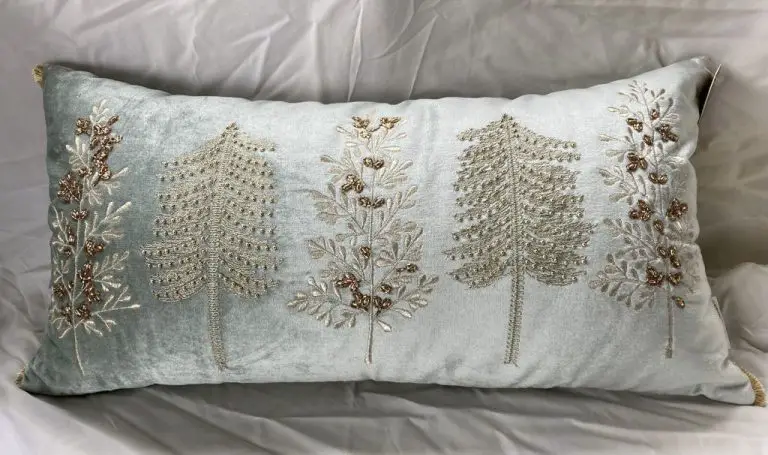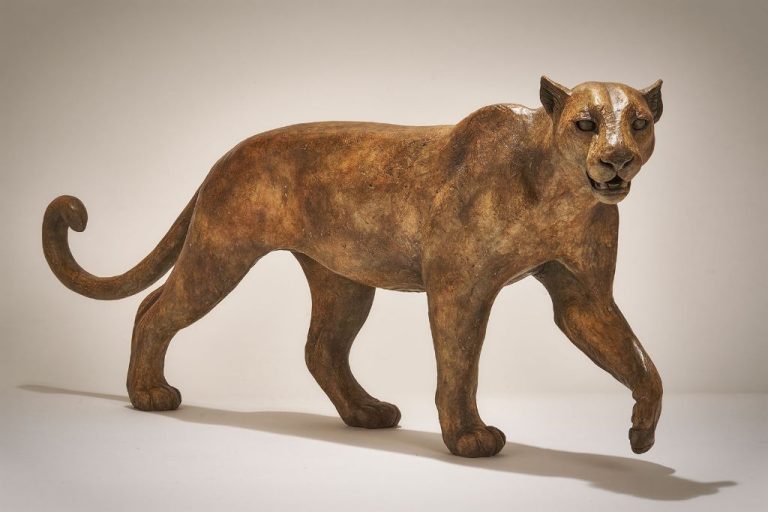Why Was Maria Martinez Important To Pottery?
Early Life
Maria Poveka Montoya was born in 1887 in the town of San Ildefonso Pueblo, New Mexico (https://www.britannica.com/biography/Maria-Martinez). She came from a family of pottery makers; her great-aunt and her aunt both created pottery in the traditional style. From a young age, Maria would watch her aunt Nicolasa make pottery and started experimenting with the craft herself as a child, learning the techniques of gathering and preparing clay. Her family and community encouraged her interest in pottery. By the time she was a teenager, Maria was creating fully formed pots and participating in pottery competitions at annual fairs (https://nmwa.org/art/artists/maria-martinez/).
Developing Her Pottery Skills
Maria Martinez learned the art of pottery making from her aunt Nicolasa Montoya Chavarria, who mentored her starting at the age of 8. Nicolasa taught Maria the traditional techniques and methods used for generations to create the local blackware pottery style. Maria learned how to gather and prepare the clay, build up basic forms using coils, and polish the finished vessels using stones (Source: https://nmwa.org/art/artists/maria-martinez/).

Another early influence was Maria’s future husband, Julian Martinez. Julian shared his experimental techniques and innovative designs, teaching Maria to mix micaceous clay with the local black clay to create the signature black-on-black finish on her pots. Julian encouraged Maria’s creativity, and together they revived the disappearing art of traditional San Ildefonso pottery (Source: https://www.denverartmuseum.org/en/edu/object/plate).
Over the years, Maria developed her own unique style, recognized for its elegant shapes and thin walls. She mastered the polishing technique that allowed her to produce paper-thin pots of remarkable strength. While staying true to the Pueblo traditions, Maria’s openness to experimentation helped her gain widespread popularity and cement her legacy as a legendary potter.
Revival of Traditional Pottery
By the early 1900s, the art of making traditional Native American pottery was dying out. Native American potters had abandoned the old techniques, such as making pottery by hand and painting natural clay slips for color, in favor of more modern, tourist-friendly styles.
Maria and her husband Julian dedicated themselves to reviving these ancient traditions. They sought out the few remaining pueblo potters who still practiced the old techniques. By watching, listening, and experimenting, Maria mastered the old methods herself. She learned to dig the clay, form vessels by hand, and paint them with natural clay slips and bee plant juices for rich black and red colors (Maria Martinez | Artist Profile | NMWA).
Maria played a crucial role in bringing these ancient pottery-making traditions back to life. Thanks to her mastery of traditional techniques, Maria created some of the most celebrated Native American pottery of the 20th century.
Maria and Her Husband Julian
Maria Montoya married Julian Martinez in 1908 when she was just 13 or 14 years old. Together they formed an iconic partnership in reviving and popularizing traditional Pueblo pottery techniques (National Museum of Women in the Arts).
While Maria became renowned for her pottery skills, Julian also contributed greatly through his innovations in painting the pottery. He introduced new styles of painting using matte slips and mineral pigments. Julian developed the polished black pottery technique that became synonymous with Maria’s pots (National Museum of Women in the Arts).
Their partnership and shared passion for pottery helped propel Maria to fame and cemented her legacy as one of the most influential Pueblo potters. Julian supported and encouraged Maria’s talents throughout their marriage.
Maria’s Pottery Style and Techniques
Maria Martinez is best known for her innovative black pottery. She perfected the ancient Pueblo technique of firing pots covered in manure, which turned them black with carbon (https://nmwa.org/art/artists/maria-martinez/). Before Maria, most Pueblo pots were unpainted terra cotta. Maria’s pottery pieces stood out for their deep black color.
While staying true to her Pueblo heritage, Maria introduced new shapes and designs in her pottery that were more symmetrical and precise. She was one of the first to create carved black-on-black decorations filled with clay slips. Maria also made innovative pottery forms like carved vessels and polychrome jars with an angled shoulder. Her pieces went beyond traditional Pueblo pot shapes and designs (https://nmwa.org/art/artists/maria-martinez/).
Maria gathered her own clay and mineral pigments from the surrounding land. She insisted on using all-natural materials found near her home. For example, she produced the black color using iron-rich clay and descried commercial paints as “not real.” Maria’s pottery reflected her deep connection to the New Mexican landscape (https://nmwa.org/art/artists/maria-martinez/).
Popularity and Reputation
Maria’s pottery started gaining recognition outside of San Ildefonso in the early 1920s after a book published by the Museum of New Mexico highlighted her work. By the mid-1920s, her blackware pottery became extremely popular among collectors (Source).
Maria’s pottery was exhibited internationally, including at the World’s Fair in San Francisco in 1939. Her work was collected by prominent institutions and individuals such as the Smithsonian American Art Museum and Nelson Rockefeller (Source).
Over her long career, Maria received numerous honors and awards recognizing her as one of the most influential Pueblo potters. These included the Annual Indian Achievement Award from the Indian Council Fire in 1974 and the National Heritage Fellowship from the National Endowment for the Arts in 1981.
Passing on Traditions
Maria Martinez was devoted to passing on the traditions of San Ildefonso pottery to the next generations. She taught pottery skills to her children and grandchildren, ensuring the continuation of these time-honored practices. Many of her descendents became accomplished potters in their own right, including her son Popovi Da, granddaughter Barbara Gonzales, and great-grandchildren Tony Da, Anita Martinez, and Adam Martinez.
Martinez was committed to preserving traditional techniques and designs. She taught the processes she learned from her own family members to her children and grandchildren, instructing them in gathering and preparing materials, forming pots using the coil method, polishing, preparing pigments, and firing. Her family members worked alongside her, and she provided hands-on guidance as they developed their skills.
While the next generations incorporated their own styles, they carried on the legacy Maria Martinez began. She helped pass down knowledge of the spiritual and cultural significance behind the motifs and methods. Her dedication to sharing her expertise both within her family and more broadly played a vital role in ensuring the continuation of San Ildefonso pottery traditions.
Legacy
Maria Martinez left a lasting impact on Native American art and pottery that continues to influence artists today. Her revival of traditional Pueblo pottery techniques helped preserve cultural practices and inspired younger generations to continue the artform. Maria’s pottery can be found in major museum collections including the Smithsonian National Museum of the American Indian[1], the Heard Museum, the Millicent Rogers Museum, and the Philadelphia Museum of Art.
The Maria Martinez family legacy continues today through her descendants who are still creating pottery using her techniques and building on her innovative spirit. Potters like Maria’s grandson Virgil Ortiz carry on her legacy by combining traditional and contemporary styles. Her great-granddaughter Cavan Gonzales continues to create blackware pots using native clay and other natural pigments. Maria’s impact can be seen in the prevalence of Pueblo pottery for sale from artists across New Mexico and the Southwest.
Notable Pieces
Maria Martinez created many notable pottery pieces throughout her career. Some of her most famous works included her signature black-on-black pottery, which revived the traditional techniques and designs of San Ildefonso pueblo pottery. She became known for her burnished blackware pottery that had carved matte designs revealing the smooth black clay underneath [1]. Some of her most iconic pieces were black jars with polished shoulder bands. She also created innovative round-bottomed pottery and experimented with red and terra cotta-colored clay.
Maria was commissioned to create unique custom pieces as her fame grew. Some unique commissions included large storage jars and vases for institutions like the Smithsonian. She also made miniature pieces of her famous blackware pottery that were just a few inches tall. Maria collaborated with her husband Julian on figurative sculptures like the famous “Water Serpent” ceramic sculpture. Her pottery developed a fluid, thinner walled style over time that required great skill.
Some of Maria’s most prized and valuable pots were the stone polished blackware made before 1930. These early pieces had walls almost as thin as an egg shell and were her most creative and finely crafted works [2]. Later customized pieces with specific designs like birds, turtles, and family symbols painted on by her husband Julian are also highly valued today.
Significance to Pottery
Maria Martinez was incredibly significant to the world of Native American pottery. She helped revitalize Native artforms through her work and mastery of pottery techniques. Before Maria gained widespread fame for her pottery, many Native American artforms were in danger of being lost. But Maria’s stunning pots made with traditional Native methods brought new attention and appreciation for Pueblo pottery traditions.
In addition to reviving interest in Native pottery, Maria was a true master of the craft. She perfected techniques like the burnished blackware style that she pioneered with her husband Julian. Maria experimented extensively to create the ideal clay mixtures, shapes, and firing methods for her pots. She was able to produce thin-walled yet sturdy vessels with beautifully polished black surfaces.[1] Her mastery of these time-honored techniques was unparalleled and set a new standard for modern Pueblo pottery.
Furthermore, Maria inspired generations of other Native American potters. As one of the most famous and reputable Pueblo artists, Maria demonstrated that Native pottery could be appreciated as high art. She mentored many younger family members and artists, passing on cherished traditions. Today, Maria’s legacy lives on through workshops teaching her methods and the many artists following in her footsteps.




